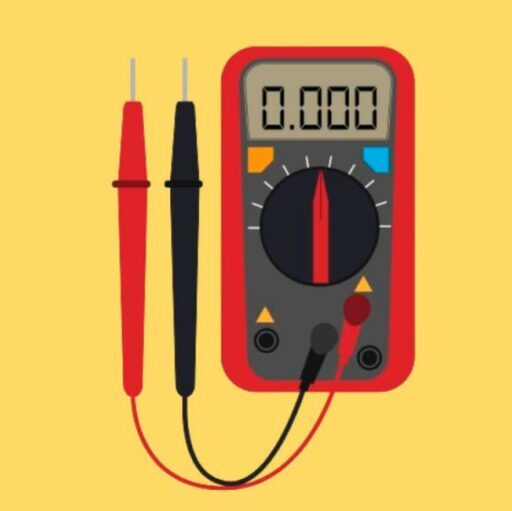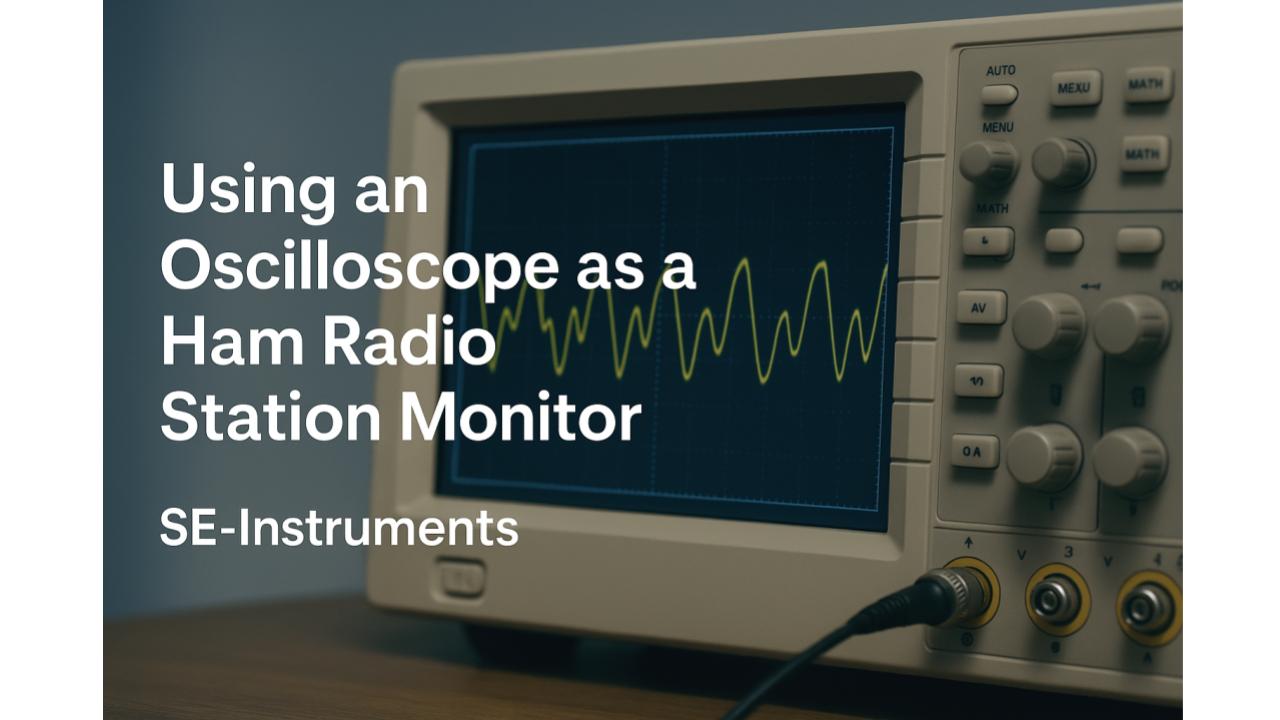📡 An oscilloscope is one of the most powerful tools in any RF enthusiast’s toolkit. For ham radio operators, it can serve not just as a troubleshooting aid, but as a real-time monitor of your station’s health and signal quality.
Rigol DS1054Z Digital Oscilloscope
In this guide, we’ll explore how to use an oscilloscope as a station monitor for your ham radio setup, what you can learn from it, and how to connect it safely.
Table of Contents
🧰 What Is a Station Monitor?
A station monitor is a device or setup that allows ham radio operators to visualize, test, and analyze transmitted or received RF signals. Traditionally, this could be a dedicated product like the HP 141T or a panadapter. However, modern digital or analog oscilloscopes can fill this role with excellent flexibility.
⚙️ What You Can Measure with an Oscilloscope
Using an oscilloscope, you can monitor and diagnose:
| 🔍 Function | ✅ What You Can See |
|---|---|
| Modulation quality | View AM, FM, SSB waveforms to check for distortion |
| Signal envelope | Detect RF clipping or overmodulation |
| Keying waveform | Visualize CW keying envelope for clean transitions |
| Audio input | Monitor microphone audio pre-transmit |
| RF envelope | Detect amplifier switching spikes or anomalies |
| SWR pattern (indirectly) | Observe reflected signal spikes under mismatch |
🧲 How to Connect Your Oscilloscope (Safely)
Warning: Oscilloscopes are not designed to directly measure high-power RF signals. Use one of the following safe coupling methods:
🔌 RF Sampler
An RF sampler taps a tiny fraction of your transmitted RF (usually -30 to -40 dB attenuation) and outputs a low-level signal suitable for oscilloscope input.
- Place the RF sampler after the transmitter but before the antenna tuner or amplifier.
- Connect the sampled output (usually 50 ohms) to the oscilloscope via coax + BNC adapter.
🎙️ Audio Monitoring
Connect the microphone output or the transceiver’s audio out directly to the oscilloscope:
- Allows waveform monitoring for voice modulation
- Especially useful for SSB or AM audio shaping
🔄 Directional Coupler
Use a directional coupler to separate forward and reflected signals. Connect the coupler output to the oscilloscope to analyze forward power envelope and reflections.
🖥️ What to Look For on the Oscilloscope
📈 AM Signal
A properly modulated AM signal will show a symmetric envelope with no flat-topping or distortion.
- Flat tops = Overmodulation
- Asymmetry = Mic gain too high or poor audio processing
🎤 SSB Signal
SSB modulation will appear as asymmetric bursts corresponding to your speech.
- Watch for clean rise and decay
- Check for unwanted audio spikes or parasitic signals
🧨 CW Signal
A CW tone should produce clean, square envelopes without ringing or overshoot.
- Sloppy rise/fall = keying circuit delay
- Multiple peaks = RF switching issues or parasitic oscillations
📻 Example Setup
Here’s a simple station monitor setup using an oscilloscope:
| Component | Connection |
|---|---|
| Transceiver | Output to dummy load or antenna via RF sampler |
| RF Sampler | Sampled signal to oscilloscope input |
| Oscilloscope | Set to 1V/div, time base ~1–10 ms/div |
| Audio Tap (optional) | From mic or transceiver audio out to second oscilloscope channel |
🧠 Bonus: Dual-Channel Monitoring
Use two oscilloscope channels:
- Ch1 = Audio waveform (mic input)
- Ch2 = RF envelope (sampled output)
This helps correlate audio quality to RF modulation in real-time.
🛠️ Tips for Best Results
- Use a 50-ohm terminator at the oscilloscope input for accuracy.
- Always attenuate the RF sample before connecting to the scope.
- Use DC blocking capacitors if your scope lacks internal protection.
- Avoid coupling directly from a high-power amplifier.
🧪 Oscilloscope Models Suitable for Ham Radio Monitoring
| Model | Bandwidth | Notes |
|---|---|---|
| Rigol DS1054Z | 50 MHz | Popular entry-level scope with 4 channels |
| Siglent SDS1202X-E | 200 MHz | High-performance budget scope |
| Hantek DSO2C10 | 100 MHz | Affordable with decent build quality |
🧭 Conclusion
Using an oscilloscope as a ham radio station monitor can provide critical insights into your signal integrity and modulation quality. From verifying CW waveform shape to diagnosing SSB distortion, an oscilloscope turns invisible problems into visible, solvable ones.
By sampling your RF safely and monitoring the right parameters, your scope becomes more than just a bench tool—it becomes the eyes of your shack.




